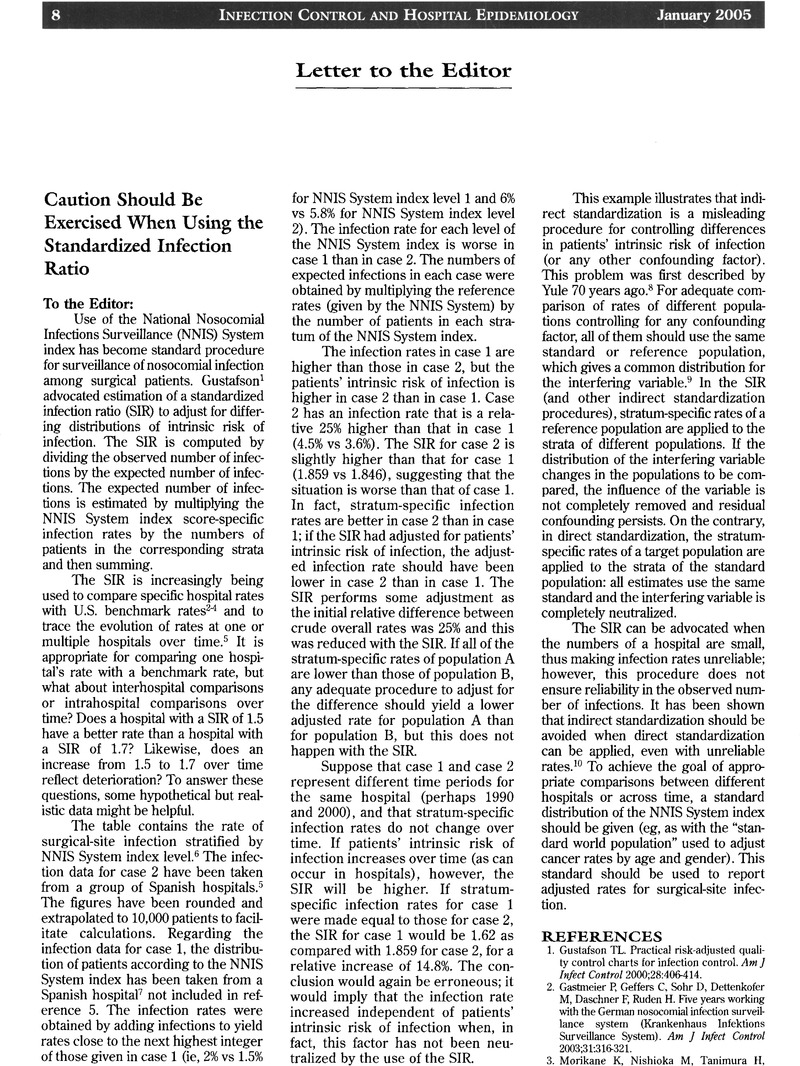Crossref Citations
This article has been cited by the following publications. This list is generated based on data provided by Crossref.
Gustafson, Tracy L.
2006.
Three Uses of the Standardized Infection Ratio (SIR) in Infection Control.
Infection Control & Hospital Epidemiology,
Vol. 27,
Issue. 4,
p.
427.
Birnbaum, David
Zarate, Roxie
and
Marfin, Anthony
2011.
SIR, You've Led Me Astray!.
Infection Control & Hospital Epidemiology,
Vol. 32,
Issue. 3,
p.
276.
O’Hara, Lyndsay M.
Masnick, Max
Leekha, Surbhi
Jackson, Sarah S.
Blanco, Natalia
and
Harris, Anthony D.
2017.
Indirect Versus Direct Standardization Methods for Reporting Healthcare-Associated Infections: An Analysis of Central Line–Associated Bloodstream Infections in Maryland.
Infection Control & Hospital Epidemiology,
Vol. 38,
Issue. 8,
p.
989.
Samareh, Aven
Chang, Xiangyu
Lober, William B.
Evans, Heather L.
Wang, Zhangyang
Qian, Xiaoning
and
Huang, Shuai
2019.
Artificial Intelligence Methods for Surgical Site Infection: Impacts on Detection, Monitoring, and Decision Making.
Surgical Infections,
Vol. 20,
Issue. 7,
p.
546.
Kim, Ikhan
Lim, Hwa-Kyung
Kang, Hee-Yeon
and
Khang, Young-Ho
2020.
Comparison of three small-area mortality metrics according to urbanity in Korea: the standardized mortality ratio, comparative mortality figure, and life expectancy.
Population Health Metrics,
Vol. 18,
Issue. 1,
Ullrich-Kniffka, Niklas
and
Schöley, Jonas
2024.
Population age structure dependency of the excess mortality P-score.
Population Health Metrics,
Vol. 22,
Issue. 1,
Srinivasan, Lakshmi
Oliver, Ashley
Huang, Yuan-shung V
Shu, Di
Donnelly, Kait M
Harrison, Cecelia
Roberts, Amy L.
and
Keren, Ron
2024.
Importance of risk adjusting central line-associated bloodstream infection rates in children.
Infection Control & Hospital Epidemiology,
Vol. 45,
Issue. 11,
p.
1280.


